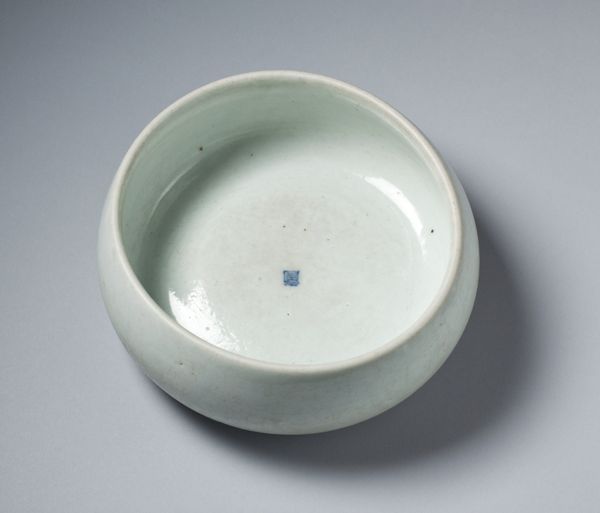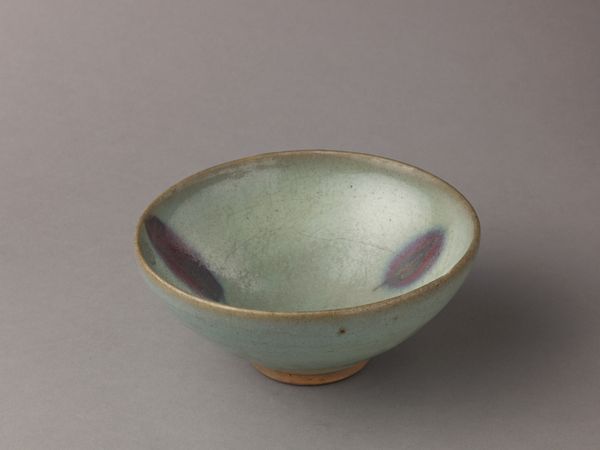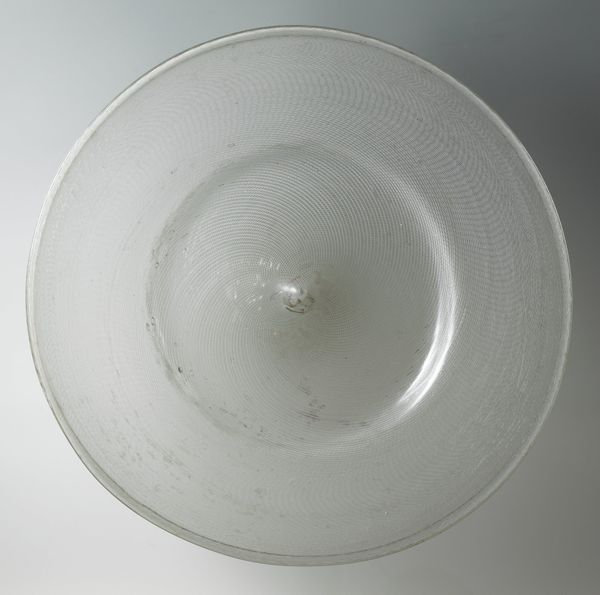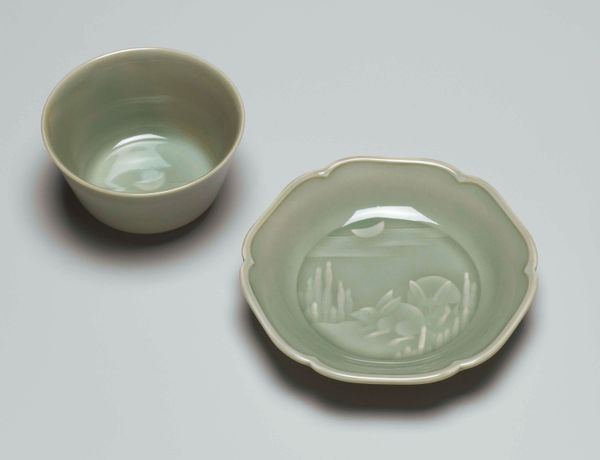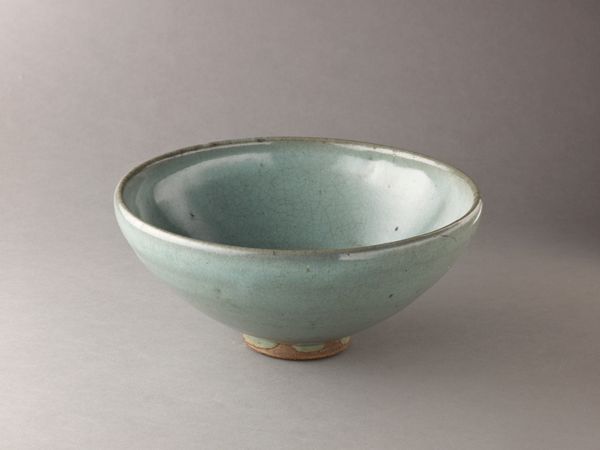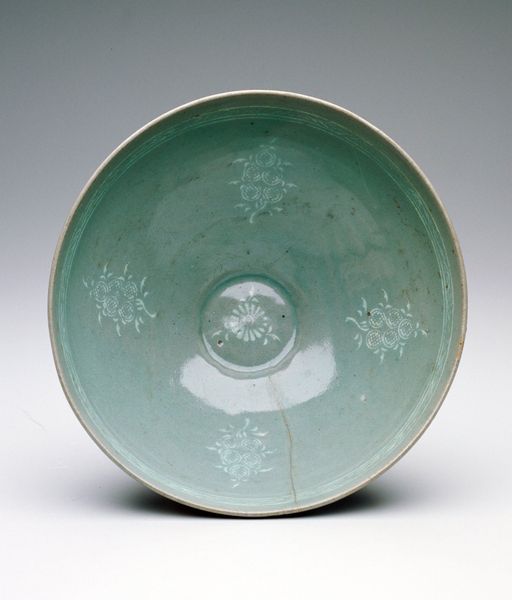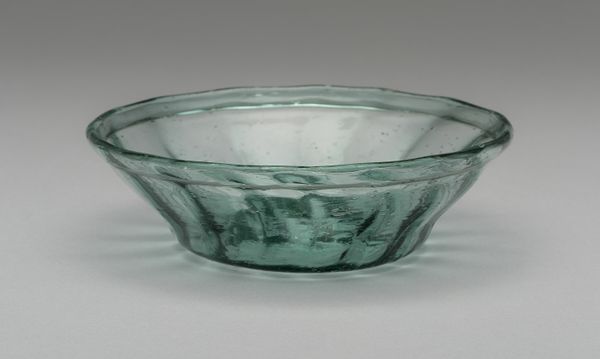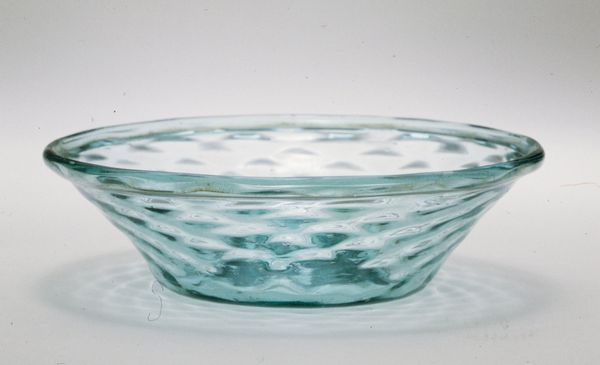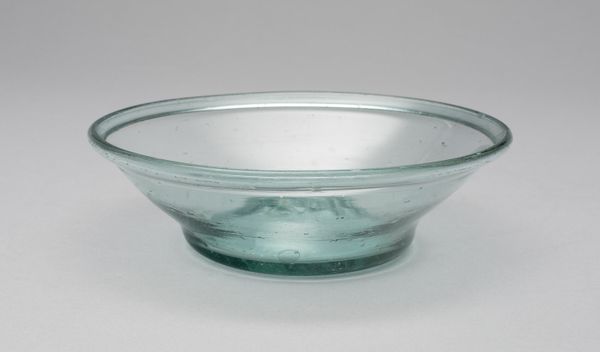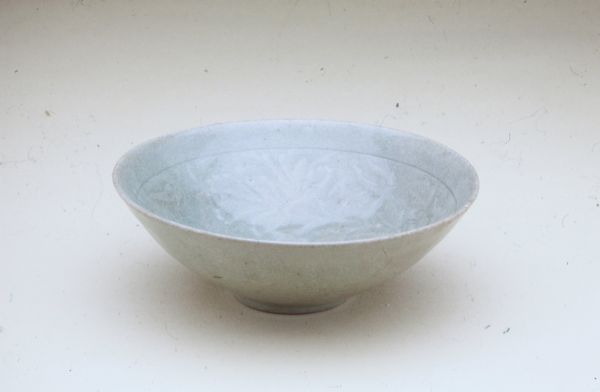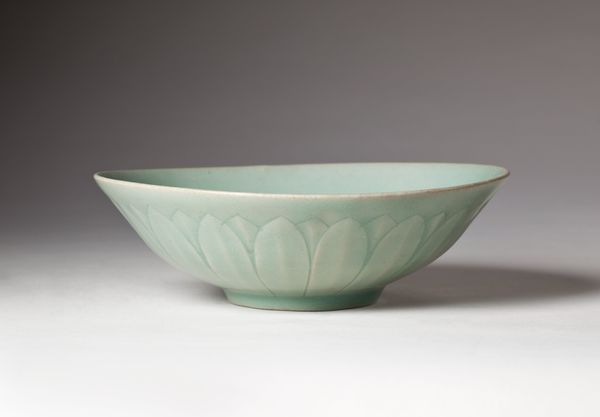
ceramic
#
product studio photography
#
egg art
#
3d printed part
#
ceramic
#
culinary art
#
food illustration
#
stoneware
#
wash background
#
ceramic
#
watercolour illustration
#
product photography
Dimensions: 3 × 6 11/16 × 7 1/8 in. (7.62 × 16.99 × 18.1 cm)
Copyright: Public Domain
Curator: Soothing. Utterly, incredibly soothing. It reminds me of a perfectly still pond just after dawn, or maybe one of those unbelievably smooth sea-stones you find on the beach after a storm. Editor: We are looking at a ceramic bowl made around the 12th century, currently held at the Minneapolis Institute of Art. It is entitled "Bowl with flying parrot." It's attributed to an anonymous maker. The light stoneware seems quite refined, even by today's standards. Curator: That colour, though. That celadon glaze is whispering secrets. It's that just-barely-there green that speaks of restraint, doesn’t shout. I wonder what purpose this bowl served? For what precious substance was it meant? It certainly wasn't intended for my breakfast cereal. Editor: This particular shade was very fashionable, prized by Song dynasty emperors, especially Huizong, as it represented their idealized aesthetic values. Beyond beauty, however, we might want to examine access. Something like this would not have been easily produced or readily available, which serves to remind us about consumption and wealth. What’s considered precious has always been determined by class. Curator: Of course. All those unspoken implications wrapped up in such a simple form. And there is such a lightness to it, a deceptive fragility despite its obvious heft. Look closely. You will observe those lovely crazing marks—tiny cracks in the glaze like whispers of age and the kiln's fierce breath. Editor: Those "crackle" effects are indeed part of what makes celadon so desirable. They were intentionally manipulated to create this textured effect. It's a very controlled form of imperfection. This craze reflects Wabi-Sabi and broader artistic trends valuing asymmetry. The parrot image has either worn off or it was never included at all. In either case, this absence evokes different sentiments: impermanence, mortality, and constant flux. Curator: So, something that seems purely aesthetic has these deeper resonances? Maybe it reminds us to not become overly attached. Everything changes! Editor: Absolutely. Art always exists within specific social, political, and cultural structures. Recognizing that makes appreciating this work more complex. It offers access to so many cultural and historical conversations, beyond the sensory delight this object produces. Curator: That’s lovely. It's comforting to be reminded of interconnectedness. It's like seeing all those delicate hairline fractures are merely the bowl expressing its experience—just as we do.
Comments
No comments
Be the first to comment and join the conversation on the ultimate creative platform.
